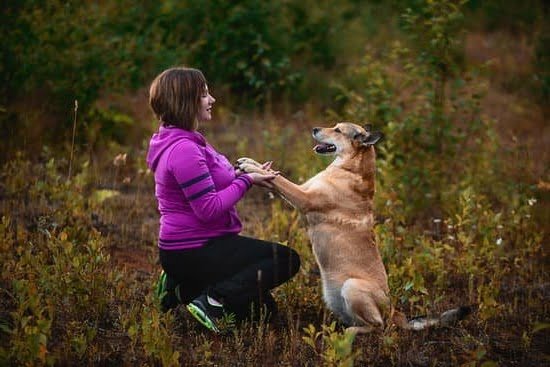Dog training is an essential aspect of owning a pet, as it helps establish boundaries, reinforce good behavior, and promote a strong bond between the dog and their owner. However, when it comes to training multiple dogs simultaneously, things can become more challenging. Many dog owners wonder if it’s possible to effectively train two dogs at the same time and achieve desirable results.
Training one dog can already be demanding, requiring time, effort, and consistency. Adding another dog into the mix may seem overwhelming and may raise concerns about dividing attention and resources between the two dogs. However, with the right approach and strategies in place, training two dogs together is definitely possible.
In this article, we will explore the benefits and challenges that come with training two dogs simultaneously. We will discuss how to set realistic expectations for both yourself and your furry companions, create individualized training plans based on their unique needs, find balance and consistency in training sessions, understand pack dynamics to facilitate their learning process, manage distractions effectively, prioritize time management techniques for efficient training sessions, as well as consider when professional help might be necessary or beneficial.
By delving into these topics, you will gain valuable insights into the world of training two dogs at once-an endeavor that requires patience, dedication, flexibility, and adaptability. Whether you are a seasoned dog owner looking to introduce a new furry friend into your household or a first-time pet parent considering getting two dogs together, this article will provide guidance on how to navigate through this rewarding but challenging journey of training two dogs simultaneously.
Benefits and Challenges
Training two dogs simultaneously can offer both benefits and challenges. On one hand, training two dogs together allows for socialization and companionship during the training process. Dogs are pack animals by nature, so having a training partner can provide motivation and reinforcement for desired behaviors. Additionally, training two dogs at the same time can often save time and effort compared to training them separately.
Moreover, training multiple dogs together can help them bond and establish a hierarchy between themselves, which in turn can promote better behavior and communication between the dogs. They can learn from each other’s successes and mistakes, making the training process more efficient.
However, there are also some challenges that come with training two dogs simultaneously. One of the main challenges is managing distractions. Dogs have different personalities, energy levels, and attention spans, so keeping both dogs focused on the training exercises can be difficult. It is important to find strategies to minimize distractions and create a controlled environment where both dogs can concentrate on their individual tasks.
Another challenge is maintaining consistency in commands and cues. Each dog may respond differently to certain cues or commands, so it is essential to ensure that all family members or trainers involved in the process use consistent language and gestures when giving instructions to prevent confusion for the dogs.
Lastly, another disadvantage of training two dogs at once is that it requires additional time and effort from the trainer. Each dog has unique learning curves, strengths, weaknesses, and specific areas that need improvement. Training plans must be tailored individually for each dog’s needs to ensure effective progress.
In summary, while there are undeniable benefits to training two dogs simultaneously such as socialization and shared learning experiences between them, there are also challenges that need to be addressed. By understanding these advantages and disadvantages of this approach to dog training early on in the process, owners can prepare themselves with realistic expectations and appropriate strategies for success.
Setting Realistic Expectations
When embarking on the journey of training two dogs simultaneously, it is crucial to set realistic goals and expectations. Training multiple dogs at once can be challenging, but with proper planning and a clear understanding of what is achievable, it can also be a rewarding experience for both you and your furry companions.
One key reason for setting reasonable expectations is that each dog has their own unique personality, learning style, and background. While some dogs may quickly grasp new commands or behaviors, others may require more time and repetition. By acknowledging these individual differences, you can avoid frustration and tailor your training approach to better suit each dog’s needs.
To establish realistic goals, consider the following:
- Prioritize basic obedience: Focus on teaching essential commands such as sit, stay, come, and leash manners before moving on to more advanced tricks or behaviors. Setting a strong foundation will make future training sessions smoother and more manageable.
- Accept incremental progress: Remember that Rome wasn’t built in a day. Celebrate small victories along the way rather than expecting instant perfection. Recognize that each dog will progress at their own pace.
- Be patient with setbacks: Dogs may have good days and bad days during training. There will inevitably be moments when one or both dogs struggle or regress in certain areas. Stay patient and adjust your approach accordingly.
- Adapt to each dog’s abilities: Just as humans have different strengths and weaknesses, dogs do too. Tailor your training plans accordingly by focusing on building upon each dog’s strengths while working on improving their weaknesses.
By setting realistic expectations based on individual capabilities and accepting that progress may vary between the two dogs, you will create an environment conducive to successful training.
To support this process further, consider breaking down your overarching goals into smaller milestones that are easier to achieve for both dogs. This will help you maintain motivation and provide a clear roadmap for your training sessions. Remember, every small step forward counts.
In the next section, we will discuss the importance of creating separate training plans for each dog based on their unique personalities, strengths, and weaknesses.
Create Individual Training Plans
When training two dogs at the same time, it is important to recognize that each dog has their own unique personality, strengths, and weaknesses. This is why creating individual training plans for each dog is crucial to their success. By tailoring the training to meet the specific needs of each dog, you can ensure that they receive the necessary guidance and support to thrive in their training journey.
Understanding Personality
One of the key aspects of creating individualized training plans is understanding the personality of each dog. Some dogs may be more outgoing and eager to please, while others may be more independent or easily distracted. By taking these traits into consideration, you can tailor your training methods accordingly. For example, a more confident dog may benefit from challenging tasks and advanced exercises to keep them engaged, while a shy or anxious dog may require more patience and encouragement.
Identifying Strengths and Weaknesses
Every dog has their strengths and weaknesses when it comes to obedience training. Some dogs may excel in certain commands like sit or stay, while others struggle with those same commands but excel in other areas. By identifying these strengths and weaknesses, you can adapt your training plan to focus on improving weaker areas while also reinforcing strong behaviors. This personalized approach helps maximize the learning potential of each dog and promotes a positive training experience for both pets.
Adapting Training Methods
In addition to personalizing the training plans based on personalities and strengths/weaknesses, it is also important to adapt your training methods for each individual dog. Just like people, dogs have different learning styles – some respond well to verbal cues, some prefer visual signals or hand gestures, while others may be highly motivated by rewards such as treats or toys.
By understanding what motivates each dog and tailoring your approach accordingly, you can create a customized learning experience that enhances their progress.
By creating individual training plans for each dog, you can effectively address their unique needs and ensure their success in learning and following commands. This personalized approach not only strengthens the bond between you and your dogs but also increases their overall obedience and behavior. Remember that while it may require additional effort and planning, the benefits of tailored training plans far outweigh any challenges that may arise.
Finding Balance and Consistency
Equal Attention for Both Dogs
When training two dogs simultaneously, it is crucial to ensure that both dogs receive equal attention. This means giving each dog individual training sessions and not favoring one over the other. By giving both dogs equal time and attention, you can prevent feelings of jealousy or competition between them. Additionally, by spending one-on-one time with each dog, you can better understand their unique needs and tailor your training approach accordingly.
It may be helpful to divide your training sessions into separate times for each dog or rotate between the two throughout a session. This way, both dogs have the opportunity to work on their skills without feeling neglected or overshadowed by the other. Remember that consistency is key when training multiple dogs – make sure to use consistent commands, reward systems, and training methods for each dog so they are not confused.
Maintaining Consistency in Commands and Cues
Consistency in commands and cues is essential when training multiple dogs at once. It is important to establish clear and distinct signals for each dog so that they understand what is expected of them. For example, use different verbal cues or hand gestures for each dog when teaching basic commands such as “sit” or “stay”.
To ensure consistency in their training, it may be helpful to assign different colored collars or leashes to each dog. This way, both you and the dogs will have a visual reminder of which commands go with which dog. Additionally, always use the same rewards system for both dogs – whether it’s treats, toys, or praise – in order to maintain fairness in their training.
Working Together as a Pack
Understanding pack dynamics can play a significant role in training multiple dogs at once. Dogs naturally establish hierarchies within their packs, and acknowledging this hierarchy can help create a harmonious training environment. Take note of any dominant/submissive behaviors between the two dogs and adjust your training approach accordingly.
If one dog consistently exhibits dominant behavior, it may be best to train them separately at first to establish clear boundaries. Once each dog understands their place within the pack, you can gradually introduce joint training sessions. This will help reinforce the pack dynamic and encourage cooperation between the dogs.
By finding balance and consistency in your training approach, both dogs can have a positive learning experience while growing into well-behaved companions. Remember to remain patient and adapt your methods based on each dog’s individual needs and abilities. With time, effort, and a consistent training plan, you can successfully train two dogs at the same time.
Utilizing Pack Dynamics
When training two dogs simultaneously, it is essential to understand and utilize their natural pack dynamics. Dogs are social animals with a natural instinct to establish a hierarchy within their group. By understanding the roles that each dog naturally assumes within the pack, trainers can use these dynamics to facilitate the training process.
One primary aspect of pack dynamics is the concept of leadership or the alpha role. In a multi-dog household, there is usually one dog that naturally takes on this role, while the other may assume a more submissive position. It is crucial for trainers to identify which dog assumes the alpha role and use this knowledge to establish authority during training sessions.
When training, it is important to provide clear and consistent instructions to both dogs, but also recognize individual differences and tailor training techniques accordingly. Give clear cues and commands while using body language and tone of voice that convey assertiveness without aggression. The alpha dog will typically respond better to direct commands and assertive handling, while more subtle cues may be appropriate for a more submissive dog.
Furthermore, when working with multiple dogs, it is essential to foster positive interactions between them during training sessions. By creating an environment where both dogs can observe and learn from each other’s responses to commands or cues, trainers can accelerate the training process. This can involve giving rewards or treats separately but in close proximity so that they associate good behavior with positive reinforcement from their trainer as well as observing their canine companion receive praise or treats.
By understanding and working with the natural hierarchy and dynamics between two dogs, trainers can make the training process smoother and more effective. Identifying leadership roles, tailoring techniques based on individual personalities, and fostering positive interactions between dogs are crucial steps in utilizing pack dynamics during training sessions. With patience, consistency, and individualized strategies, simultaneous training of two dogs can be a rewarding experience for both trainers and their furry companions.
Managing Distractions
When training two dogs simultaneously, distractions can pose a significant challenge. Dogs naturally have short attention spans and are easily distracted by their surroundings or each other. However, with the right strategies, it is possible to manage distractions and maintain focus during training sessions.
One effective strategy for managing distractions is to incorporate controlled environments. This involves creating a designated training area that is free from external stimuli that may divert the dogs’ attention. It can be as simple as using a fenced-in backyard or a quiet room indoors. By minimizing potential distractions, you can increase the dogs’ ability to concentrate on the training tasks at hand.
Additionally, gradually increasing difficulty levels in training exercises can help prepare the dogs to handle distractions more effectively. Start with basic commands in a distraction-free environment and gradually introduce more challenging scenarios over time. For example, once both dogs have mastered sit and stay commands individually, you can begin practicing these commands together in gradually more distracting locations such as parks or busy streets.
| Strategy | Description |
|---|---|
| Controlled Environments | Create a designated training area that is free from external stimuli. |
| Gradually Increasing Difficulty Levels | Start with basic commands in a distraction-free environment and gradually introduce more challenging scenarios. |
By implementing these strategies, you can help your dogs stay focused during training sessions despite various distractions. Remember to be patient and consistent with your training approach, allowing both dogs to progress at their own pace while maintaining a positive and rewarding learning experience for them.
Time Management
Time management is a crucial aspect of training two dogs simultaneously. It can often feel overwhelming to divide your attention and dedicate enough time to each dog’s training needs. However, with proper planning and organization, it is possible to effectively train both dogs while maximizing your time and resources.
One practical tip for time management when training two dogs is to schedule dedicated training sessions for each dog individually. This allows you to focus solely on one dog at a time, giving them the attention they need without distractions. During these sessions, you can work on specific commands or behaviors that require individualized attention.
In addition to individual sessions, finding ways to train both dogs together can also be beneficial for time management. Utilizing group training exercises not only allows you to save time by working with both dogs simultaneously but also helps foster their socialization skills. Simple activities like practicing obedience commands or playing interactive games together can be effective in reinforcing their training while efficiently using your time.
It is important to remember that even though you may be training the dogs together at times, each dog should still have their own designated training plan based on their unique personalities, strengths, and weaknesses. This ensures that you are addressing their individual needs and setting realistic expectations for their progress.
| Tips for Time Management |
|---|
| Schedule dedicated individual training sessions |
| Find ways to train both dogs together |
| Create separate training plans based on individual needs |
Hiring Professional Help
Hiring Professional Help:
Training one dog can already be a challenge, but when it comes to training two dogs simultaneously, there may be situations where seeking professional assistance becomes necessary or beneficial. This is especially true in complex behavior modification cases or when dealing with particular breeds that have specific training needs.
Firstly, in complex behavior modification cases, professional trainers with expertise in canine behavior can provide invaluable assistance. If one or both of the dogs have significant behavioral issues such as fear aggression, separation anxiety, or reactivity towards other dogs, an experienced trainer can help develop a comprehensive plan to address these challenges.
They can assess each dog individually and create tailored training programs to address their specific needs. Additionally, professional trainers are skilled at implementing behavior modification techniques in a safe and effective manner, ensuring the welfare of both dogs and minimizing the risk of injuries.
Secondly, certain dog breeds may require specialized training approaches due to their unique characteristics. Some breeds have high energy levels and may need extra mental and physical stimulation to prevent destructive behaviors.
Breeds that were originally bred for guarding or protection purposes may have strong protective instincts that need to be properly channeled through structured training. A professional trainer who has experience working with these breeds can provide guidance on how best to train them effectively and ensure their specific needs are met.
Furthermore, hiring a professional trainer allows for an objective perspective on the training progress of both dogs. Sometimes as owners, we may unintentionally reinforce certain behaviors or miss subtle signs of progress. Having an experienced trainer observe the dogs’ interactions and behaviors firsthand can provide valuable insights into areas that need improvement and offer additional strategies for success.
Conclusion
In conclusion, training two dogs at the same time can be a rewarding but challenging endeavor. It is essential to establish realistic goals and expectations, understanding that training two dogs simultaneously may take more time and effort than training just one dog. Patience and consistency are key when it comes to successful training, as well as creating individualized training plans for each dog based on their unique personalities, strengths, and weaknesses.
Maintaining balance and consistency in the training environment is crucial to ensure both dogs receive equal attention. This includes using consistent commands and cues, as well as finding ways to incorporate pack dynamics into the training process. Understanding the natural hierarchy and dynamics between the two dogs can facilitate their learning and make the training process more effective.
Managing distractions is another important aspect of training two dogs at the same time. By incorporating controlled environments and gradually increasing difficulty levels, you can help both dogs focus on learning without becoming overwhelmed or distracted.
Effective time management is also key when training multiple dogs. Scheduling dedicated training sessions for each dog individually, as well as finding opportunities to train them together, can help maximize efficiency while providing necessary individualized attention.
While many dog owners may be able to handle training two dogs simultaneously on their own, there are instances where seeking professional assistance may be necessary or beneficial. Complex behavior modification cases or specific breed characteristics may require specialized knowledge or experience that a professional trainer can provide.
Frequently Asked Questions
How do you train 2 dogs at the same time?
Training two dogs at the same time can be challenging, but it is definitely possible with proper planning and consistency. The key is to establish separate training sessions for each dog to ensure individual attention and personalized instruction. It’s important to use clear verbal cues or hand signals that are unique for each dog, so they can easily differentiate between commands.
Additionally, teaching them basic commands separately before moving on to joint training sessions can be beneficial. Consistency in training methods and rewarding desired behaviors will help both dogs understand expectations and reinforce their learning.
Is it hard to train two dogs at the same time?
Training two dogs simultaneously can be more difficult than training a single dog since it requires dividing attention and resources. However, whether it is hard or not largely depends on the individual dogs involved, their personalities, and their previous training experiences.
If both dogs have prior obedience training or similar temperaments, it might be easier as they may respond well to consistent commands and demonstrate mutual motivation during training sessions. On the other hand, if there are significant personality differences between the two dogs or if one of them has behavioral issues requiring special attention, it could indeed present additional challenges.
Is it harder to train 2 puppies at the same time?
Training two puppies at the same time generally requires more effort compared to working with older dogs or a combination of adult and young dog. Puppies have shorter attention spans and higher energy levels than adult dogs, which makes focus during training sessions more challenging. Since both puppies are likely to be at a similar stage of development, they may also compete for attention during training sessions.
To address this situation, it is advisable to implement short but frequent training sessions throughout the day to prevent exhaustion and maintain engagement. Using positive reinforcement techniques for both puppies individually while being aware of any potential rivalry will help ensure that each gets equal opportunity for learning and growth.

Welcome to the blog! I am a professional dog trainer and have been working with dogs for many years. In this blog, I will be discussing various topics related to dog training, including tips, tricks, and advice. I hope you find this information helpful and informative. Thanks for reading!





